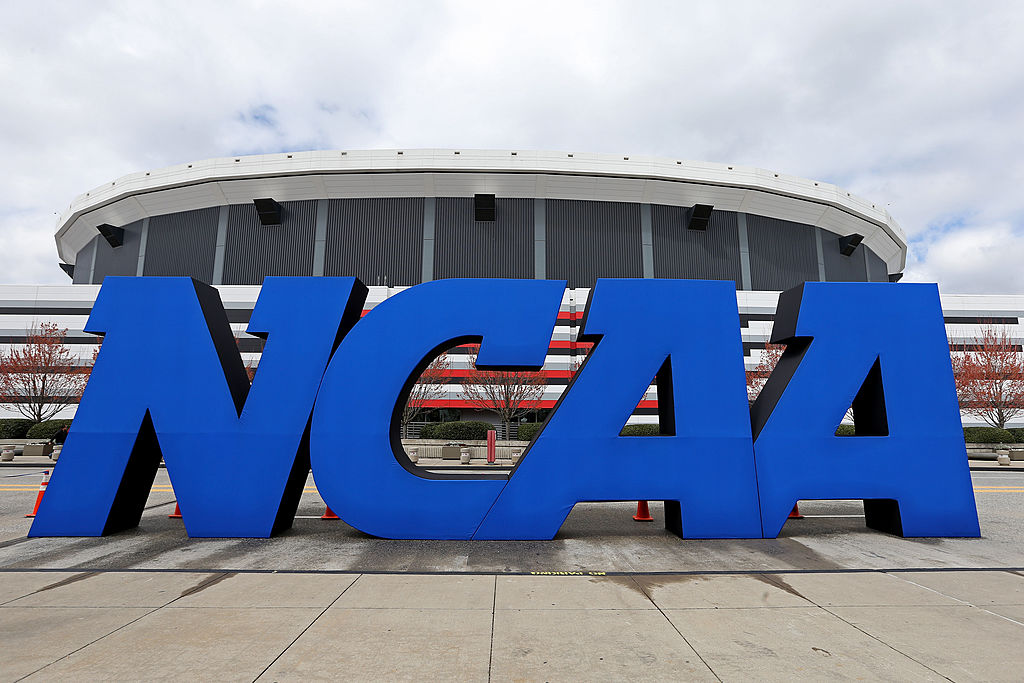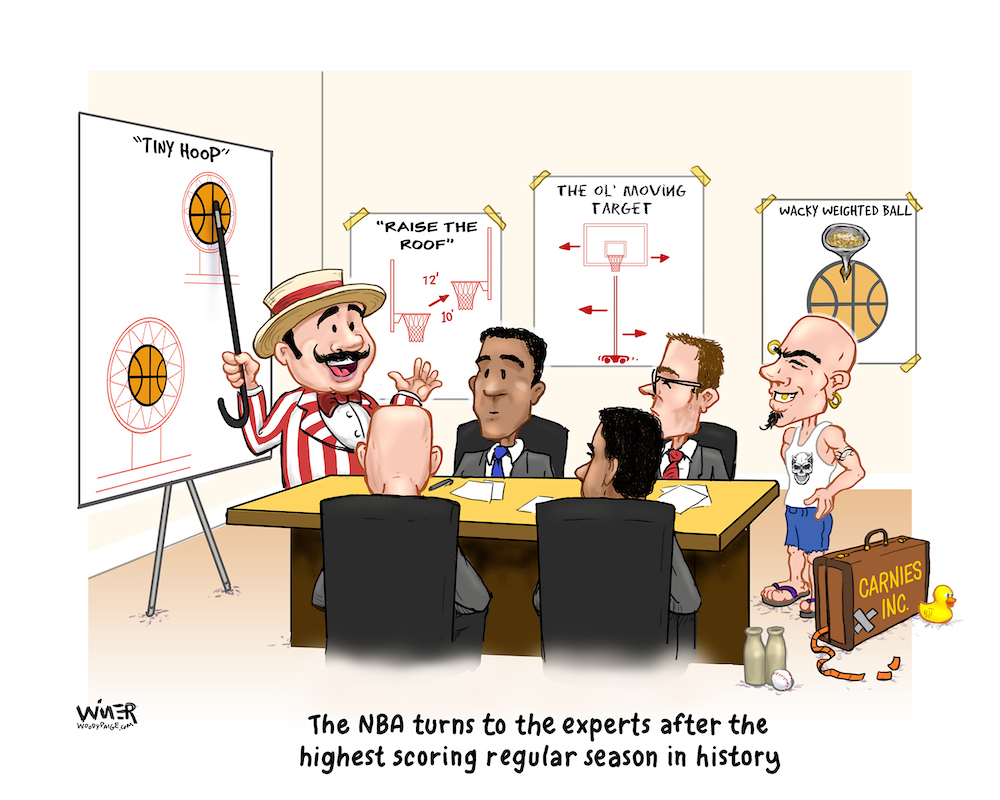Next weekend’s Wisconsin-Ohio State game lost luster when Illinois upset the previously unbeaten Badgers 24-23 in Champaign Saturday. The Badgers still have a shot at winning the Big Ten West and reaching the conference championship game, but their chances of cracking the College Football Playoff field – even by winning out — are greatly diminished.
Ohio State is 7-0 and also has another key matchup upcoming against Penn State on November 23.
The Wisconsin-Ohio State rivalry dates back to 1913, and the Buckeyes hold a 59-18-5 edge. Among past notable games, the one in Madison on Halloween 1942, less than a year after U.S. entry into World War II, involved similar stakes and was played amid a final-fling atmosphere. Most players and many of their student contemporaries soon were going off to fight … and not all would come back alive.
That week, undefeated Ohio State was No. 1 in the AP poll.
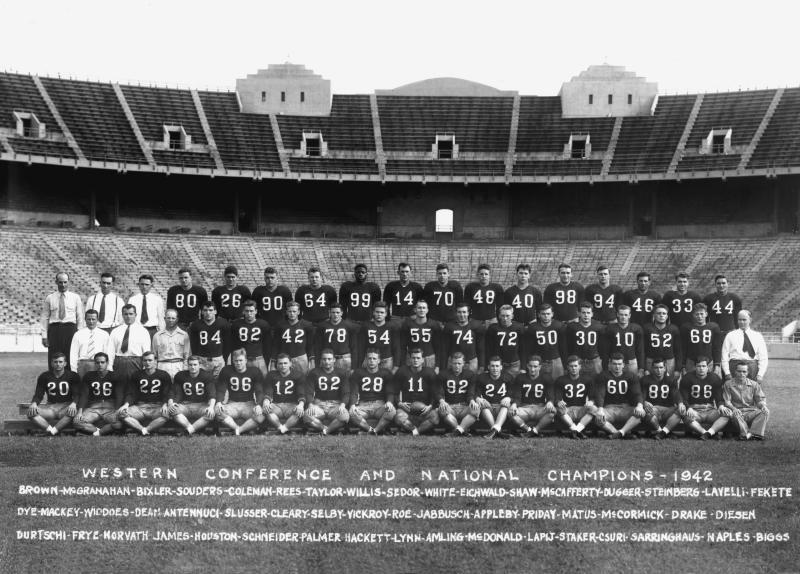
Wisconsin, which had tied Notre Dame 7-7 in the second week, was sixth.
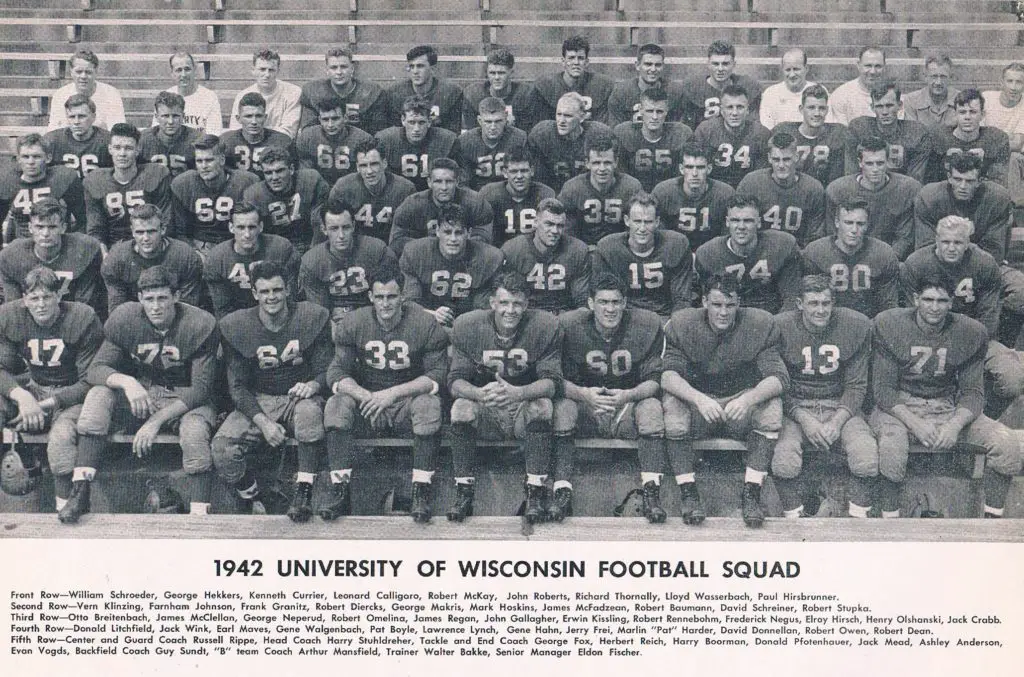
The coaches, Ohio State’s Paul Brown and Wisconsin’s Harry Stuhldreher, both were from Massillon, Ohio. Brown was playing at Massillon High when Stuhldreher was one of the Four Horsemen at Notre Dame. While Stuhldreher was at Villanova and then Wisconsin, Brown coached at Massillon High. Stuhldreher was resentful when Brown stepped directly from there into the Ohio State job in 1941. Brown’s hero worship of Stuhldreher was history. They despised each other.
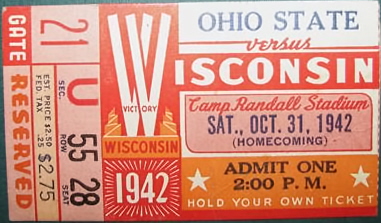
Wisconsin co-captain Dave Schreiner continued in his job as a waiter in a girls’ dormitory. Named the game captain, the Badgers’ senior end received a telegram at his fraternity from the Ann Emery Hall residents, declaring:
CONGRATULATIONS WITH YOU AS OUR CAPTAIN WE’RE SURE OF OUR GOAL.
This was the same young man who on December 11, 1941 wrote to his parents:
I don’t like to leave my normal way of life, but I’m not going to sit up here snug as a bug, playing football, etc., when others are giving their lives for their country. I’m not going to foolhardily rush into it, but I am going to do more than sit up here and do nothing but go to school. If everyone tried to stay out of it what a fine country we’d have!
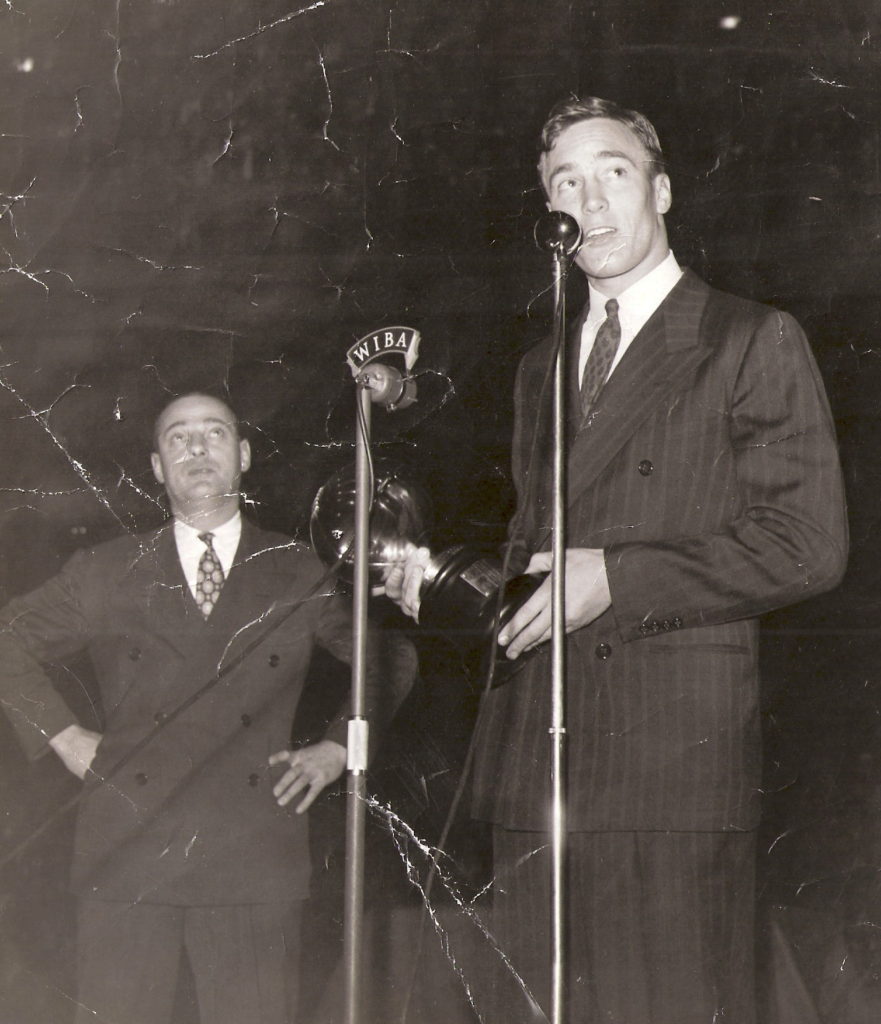
The Buckeyes arrived by train in Madison Friday and checked into the Park Hotel in downtown Madison. Some players went to a movie.
All hell broke loose in Madison after a pep rally.
The Daily Cardinal said the mess involved “students . . . marching down State Street, blocking traffic, rocking cars and trampling everything in their path.” The Wisconsin State Journal labeled it a “three-hour near-riot.”
Some Buckeyes got caught up in it, breathing in tear gas. “We were kept up all night by people banging on our doors and things like that,” Gene Fekete, the Buckeyes’ star fullback, told me.
The next afternoon, the Badgers won 17-7 in Camp Randall Stadium. Future NFL stars Elroy “Crazylegs” Hirsch and Pat Harder combined for 215 yards rushing. Schreiner, destined to be an All-American that season for the second time and win the Chicago Tribune Silver Football as Big Ten MVP, shut down one flank defensively and caught a TD pass from Hirsch.
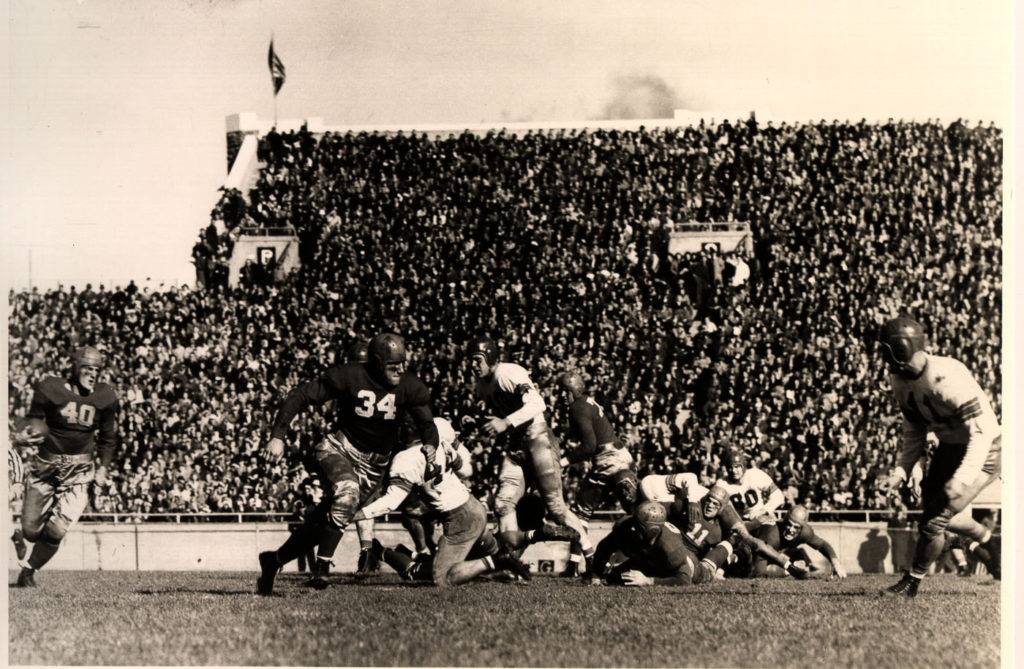
Fekete noted some Buckeyes were fighting dysentery and told me of one graphic in-game example that involved halfback Les Horvath. In Buckeye lore, this became, “The Bad Water Game.”
The ’42 Badgers I spoke with years after the game considered the Buckeyes’ talk of illness to be lame.
The Buckeyes finished 5-1 in the Big Ten, the Badgers 4-1. Overall, the Buckeyes were 9-1 and the Badgers 8-1-1. Disregarding the head-to-head result, the final AP poll had the Buckeyes No. 1 and the Badgers No. 3. The Helms Foundation named the Badgers its national champion.
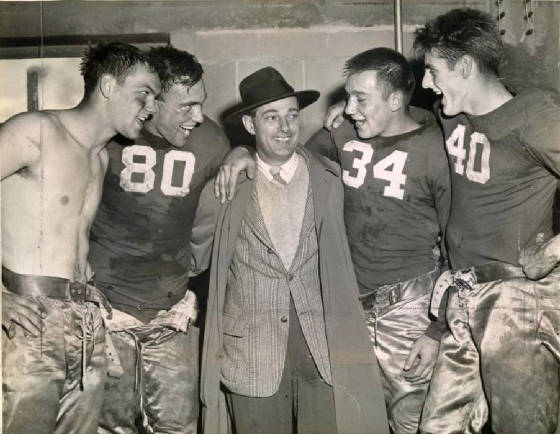
Most players in the game had been enlisted for months. They were summoned into active service. Many – stars and scrubs alike — were heroic, in both the European and Pacific theaters.
My father, Jerry, was a sophomore guard on the ’42 Badgers before taking a four-year break prior to his ’46 junior season to fly 67 missions as a P-38 pilot. He looked up to the older ’42 Badgers, including Schreiner, senior halfback Mark Hoskins and senior tackle Bob Baumann. He was saddened when Schreiner and Baumann, serving in the same Marine company, were killed in the Battle of Okinawa, and when B-17 co-pilot Hoskins was reported missing in action after his plane was shot down during a mission against German-held targets in Hungary.
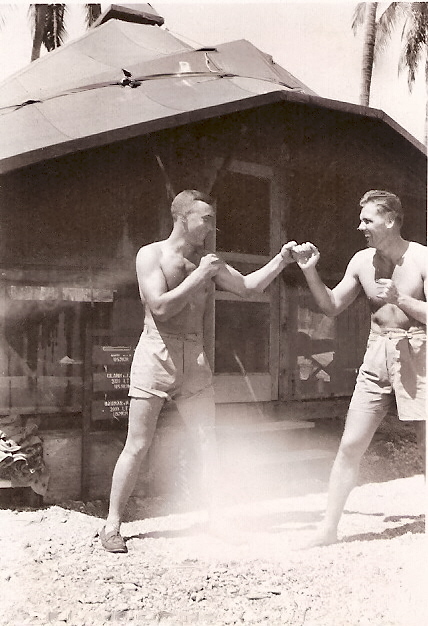
Among the many Buckeyes who served, ’42 All-American tackle Charles Csuri – later labeled by Smithsonian magazine as “the father of digital art and computer animation” — earned the Bronze Star in the Battle of the Bulge, as did ’42 Badger reserve tackle Dave Donnellan.
The Saturday Buckeyes-Badgers game won’t be played against the same sort of backdrop, but it seems likely to be memorable.
About Terry: His seven books include Third Down and a War to Go, about the 1942 Badgers, and Horns, Hogs, and Nixon Coming. His woodypaige.com archive can be found here.








